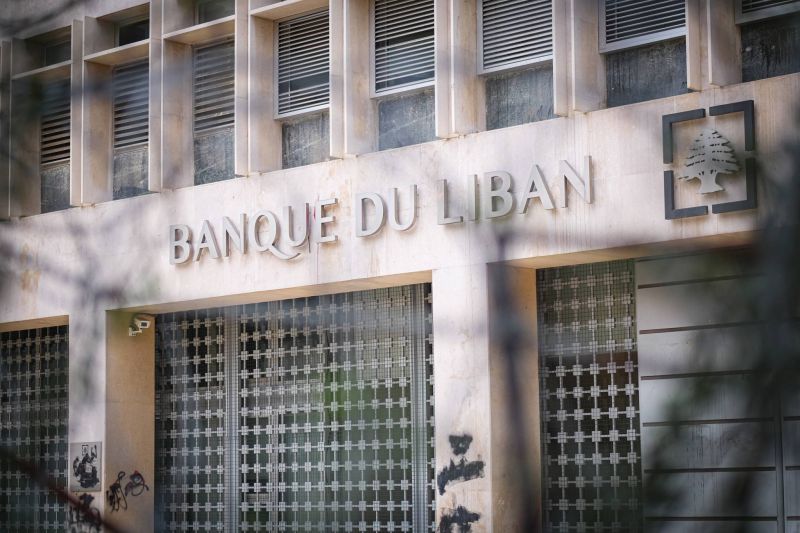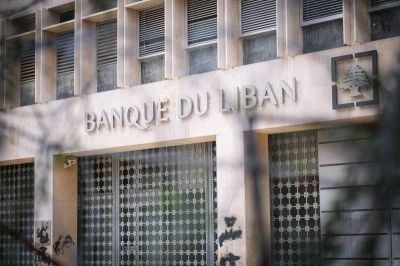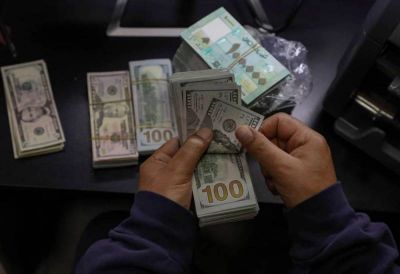
Banque du Liban headquarters in Beirut. (Credit: João Sousa/L'Orient Today)
In a Sunday interview with the Egyptian channel al-Qahera, Banque du Liban (BDL) Governor Riad Salameh spoke about Lebanon's banking sector.
Salameh, who has been in office since 1993 and whose term will expire in July, did not address BDL's latest bi-weekly controversial balance sheet listing $16.5 billion in assets as loans granted to the public sector, ie, the state.
“This balance sheet line was empty until now,” Henri Chaoul, a financial expert, told L'Orient-Le Jour.
At the new official exchange rate of LL15,000 to the dollar that went into effect on Feb.1, this $16 billion amounts to LL 247,575,453,859,000.
Collateral funds
The funds appeared to correspond to loans to the public sector, which means the $16 billion is a debt the government must repay.
In the report's footnote, BDL justifies the transaction by invoking “articles 85 and 97 of the Code of Money and Credit,” explaining that “BDL is the public sector's bank and acts as a financial agent on its behalf.”
In this capacity, BDL “made payments on behalf of the Lebanese government since the end of 2007 by drawing on its own foreign exchange reserves.”
According to the same report, to secure these payments, the government deposited the equivalent of these amounts in lira — as “collateral” — at the former official peg of LL1,507.5 to the dollar, which was drawn directly from its lira account at BDL.
To explain why this sum, which was converted into lira, only appears now, BDL said the amount was covered by the government's lira deposits at the old official LL1,507.5 rate.
According to Chaoul, the BDL had no right to do this.
Yesterday, @BDL_Lebanon disclosed its biweekly interim balance sheet with two key eye-popping items: the appearance of a new 16 bn USD debt to the State and a 36 billion USD “Valuation Adjustment”. Let us start with the first one. Where do these 16 bn come from? pic.twitter.com/yBvNaoyC0l
— Henri J. Chaoul ???? - ? (@henrichaoul) February 17, 2023
Chaoul was part of the team of negotiators selected by the government of former Prime Minister Hassan Diab to lead the first round of talks between Lebanon and the International Monetary Fund (IMF) in 2020 before he and the former Finance Ministry Director-General, Alain Bifani, walked out of the team in June that same year.
“The first problem is that, through this operation, the Central Bank has plunged the state into debt for more than 15 years without going through Parliament and without any reaction from the finance ministers or government representatives sitting on its Central Council. Neither the Constitution nor the Code of Money and Credit allows it to do so,” Chaoul told L’Orient-Le Jour.
“The second problem is that the government deposited lira when it borrowed the corresponding dollar amounts. The lira has since depreciated and been [formally] devalued, and the borrowed dollars have been spent. So, it was the collateral held by the BDL that lost its value in the process. The losses should have been recorded on the BDL's balance sheet,” Chaoul continued.
“Long story short: [Salameh] decided on his own to create a foreign exchange in the state's debt, overdraw it by $16.5 billion and left Lebanese pounds deposited [in the state's account] in return, but those are no longer worth anything,” Chaoul further explained.
Opposing positions
BDL did not respond to L'Orient-Le Jour's requests for comment.
During his Sunday interview, Salameh mentioned only the status of various advances granted by BDL since the beginning of the crisis, assuring they were granted in lira and not in dollars.
Chaoul is not the only financial expert to offer his reaction.
“Lebanese government debt, in favor of the central bank, went from zero to $16 billion in one day. I wonder what they spent it on last night,” Dan Azzi, a former banker, posted on Twitter on Sunday. “This is despite the governor repeatedly stating that he never provided [dollars] to the government.”
This is not the first time that BDL's choices spark controversy.
In 2020, the press revealed a BDL audit report by Deloitte and Ernst & Young (E&Y) that found the central bank “boosted the institution's assets by at least $6 billion using unorthodox accounting methods.”
“Seigniorage revenues on financial stability,” the amounts of which were allegedly arbitrarily determined by Salameh, were singled out. To date, however, this decision has not been sanctioned.
In January 2022, François de Ricolfis, the former head of the regional economic service at the French embassy, seemed to indicate that the debate on “what should be considered a dead loss and what — as BDL maintained at one time — could still be compensated by future revenues,” had been settled, without giving any further details.
It remains to be seen which category the $16.5 billion will fall into.
Also on Twitter, Azzi recalled that $22 billion from BDL's mid-March 2022 balance sheet had disappeared.
In a statement issued at the time, the central bank mentioned a “netting” operation in which it “offset loans to banks with corresponding deposits [collateral] of the same maturity made by the latter, all denominated in lira, in order to meet certain international standards for the presentation of financial instruments.”
This article was originally published in French in L'Orient-Le Jour. Translation by Sahar Ghoussoub.

